- News
- Reviews
- Bikes
- Accessories
- Accessories - misc
- Computer mounts
- Bags
- Bar ends
- Bike bags & cases
- Bottle cages
- Bottles
- Cameras
- Car racks
- Child seats
- Computers
- Glasses
- GPS units
- Helmets
- Lights - front
- Lights - rear
- Lights - sets
- Locks
- Mirrors
- Mudguards
- Racks
- Pumps & CO2 inflators
- Puncture kits
- Reflectives
- Smart watches
- Stands and racks
- Trailers
- Clothing
- Components
- Bar tape & grips
- Bottom brackets
- Brake & gear cables
- Brake & STI levers
- Brake pads & spares
- Brakes
- Cassettes & freewheels
- Chains
- Chainsets & chainrings
- Derailleurs - front
- Derailleurs - rear
- Forks
- Gear levers & shifters
- Groupsets
- Handlebars & extensions
- Headsets
- Hubs
- Inner tubes
- Pedals
- Quick releases & skewers
- Saddles
- Seatposts
- Stems
- Wheels
- Tyres
- Health, fitness and nutrition
- Tools and workshop
- Miscellaneous
- Cross country mountain bikes
- Tubeless valves
- Buyers Guides
- Features
- Forum
- Recommends
- Podcast
review
£216.30
VERDICT:
Great way to keep devices charged, while being easy to fit and swap between bikes
Oodles of power, especially at low speeds
Quick to install or remove
Long-life rubber ring
Multiple installation options
Charges two devices at once
Easy to turn on/off while riding
Quiet
Will wear anodising off black rims
Not cheap but cheaper than most dyno hubs
Need to factor in import costs
Not recommended for carbon wheels and a few fork designs
Weight:
520g
Contact:
At road.cc every product is thoroughly tested for as long as it takes to get a proper insight into how well it works. Our reviewers are experienced cyclists that we trust to be objective. While we strive to ensure that opinions expressed are backed up by facts, reviews are by their nature an informed opinion, not a definitive verdict. We don't intentionally try to break anything (except locks) but we do try to look for weak points in any design. The overall score is not just an average of the other scores: it reflects both a product's function and value – with value determined by how a product compares with items of similar spec, quality, and price.
What the road.cc scores meanGood scores are more common than bad, because fortunately good products are more common than bad.
- Exceptional
- Excellent
- Very Good
- Good
- Quite good
- Average
- Not so good
- Poor
- Bad
- Appalling
The PedalCell is a new take on a design nearly as old as the bicycle itself – the bottle dynamo, running on the front wheel. PedalCell has used the latest supercapacitor technology and a high-output dynamo to create a charging system that beats the pants off hub dynamos in terms of power overall and especially at low speeds. Yes, it's more visually intrusive – but if you've already covered your bike in racks and bags it looks fine.
PedalCell launched in late 2020 after a five-year development process. At least one of the team is a literal rocket scientist, having worked on the SpaceX project, and the amount of electrical geekery that's gone into the PedalCell is huge for what is at its simplest a spinning magnet inside some wire loops.
You buy the PedalCell from its US website for $320 including shipping. This means you're looking at around the £280 mark with VAT and duty applied. As import duty can be a grab-bag of which code the border force decide to apply, don't take this price as gospel.
The PedalCell comes in two parts: the dynamo which clamps to your fork or frame, left or right side, front or back, which then attaches to the charging box with an 80cm cable. That cable length is as measured from where the cable emerges from the clamp and starts its journey to the box. There's plenty of slack for fork-mounted installations, but if you have a large frame then it might not stretch all the way to the handlebar.
Of course there's nothing saying the box has to mount on the bars – there's enough stretch in the rubber ladder strap to fit on a 35mm frame tube too. You could also pass the cable through the port in a framebag, thereby waterproofing your solution while cleaning up the look.
This would be a sensible plan for bikepackers using the PedalCell to charge up battery banks – particularly ones then able to pass charge through to devices while being topped up themselves.
A few caveats: PedalCell doesn't recommend it for use on carbon wheels, and it won't work on Lauf or Cannondale Lefty forks where the wheel moves in relation to the upper part of the fork. PedalCell says that you can mount it on the chainstays in those cases.
The charger itself measures 75 x 30 x 55mm, with the aforementioned rotating-mount rubber ladder strap on the back, the 6-pin connector at one end and the two USB-C charging ports at the other.
The USB ports aren't waterproof per se, I'd say rain-proof to an extent. Let's face it, few USB ports are waterproof, and if you're after a solution that will survive torrential rain you need to be looking at mounting everything in a frame bag, and/or going for wireless charging as offered by the likes of the SKS Compit+ system.
Installation
Installing the PedalCell is a few minutes' work with the provided 4mm Allen key. PedalCell offers a tamper-resistant set of bolts and a special Allen key for $20. One theft-proofing option is to just remove the charger box, which might discourage people who know it's needed.
It's really important to align the dynamo so the rubber ring sits perpendicular to the rim surface when engaged. It has a bolt to change the dynamo angle to fine-tune this.
The dynamo is held against the rim by a strong spring, with a locking mechanism to hold it out from the rim when not in use or changing wheels. This can be operated while riding with practice and care. PedalCell advises the top speed of the unit is 40mph; I wouldn't recommend trying to disengage the dynamo at that speed. This ability to totally disengage the dynamo is a bonus over hub models.
The dynamo needs about 5mm of rim to contact, which should be fine even for low-profile disc brake-only rims. It will wear black anodising off rims, leaving a silver strip of about 3.5mm, which against a tyre is hard to notice but worth being aware of.
PedalCell claims O-ring life of around 2,000-3,000 miles, and provides two replacement rings with your purchase. A pair costs $10 plus shipping, so hardly an expensive maintenance regime.
An obvious concern with a physical rubber-on-metal interface exposed to mud, rocks and general road filth will be wear, but over a few hundred miles of bikepacking on gravel roads and muddy tracks the PedalCell O-ring performed flawlessly and still looks in good shape. Overall, the installation and physical robustness of the PedalCell can't be faulted.
Charge!
One of the USB ports is a constant-output 'priority' limited to 600mA (3 watts), the other is the 'high power' port that can do 2.4A (12 watts), but needs the supercapacitors to charge up first. Somewhat annoyingly, this port is identified by a tiny black-on-black icon of a lightning bolt – which is near-impossible to see in sunlight or rain. I rubbed mine with a white crayon to make it stand out. The 3W/600mA priority port stays on for 30 seconds once the bike stops, if the capacitors are full – so if you're using that port to power a USB light you should be good.
Inside the box is a computer that controls which ports get how much power, depending on your speed, what's plugged in where, how charged the supercapacitors are and so on. The supercapacitors are rated for between half and one million charge cycles, and operate over a wide temperature range. So basically, plug your stuff in and ride. Let the box charge everything as best it knows how.
I went for a 5,000mAh battery pack that could pass the charge through to my iPhone, thereby ensuring both my phone and the battery pack were always charged. On multi-day rides I'd plug my Garmin 830 and InReach GPS communicator into the 3W port, as they took next to no time to charge back up.
This is where the PedalCell rubber hits the road – just how much juice can you get from it for a given speed, compared to a dynamo hub? The answer is 'lots' – way more than a dyno hub setup and, critically, at much lower speeds.
Now PedalCell has been in the wild for a while there are several independent test results, including this one from the German FahrradZukunft team. Their results show the PedalCell beating out the other dynamo-USB converters, which were all powered by a SON28 hub dynamo on a test rig.
The SON28 is £200 by itself; you then need to build it into a wheel, and then buy the appropriate USB converter (dozens out there, anywhere from £30 to £237) to make it useful for charging things. Oh, and they do a max of between 0.8 and 1.5A at best, and you usually can't run lights and charge USB at the same time.
Of course, if you're using the dynamo hub just for lights that's a different story as you don't need the USB device – fill yer boots. But these days most people are also looking for phone, navigation and other charging options.
PedalCell has published a handy Google Spreadsheet detailing expected charge rates for given wheel sizes and speeds.
So the dyno hub + USB converter route is both considerably more expensive and less powerful than the PedalCell – but is undeniably tidier. If a dyno hub fails, you're looking at a wheel rebuild – which, depending on how handy you are (or not), could set you back more money and time.
There's no right or wrong way to do on-bike power, just what's the best balance of cost, looks, power and maintenance for your use case.
In use
Out in the Highlands on my bikepacking rig, the PedalCell gave me good results as reflected in the various online lab test articles. A 35km ride with 500m of climbing at an average of 17.5kph over two hours gave an output of 1,300mAh into a battery – meaning a usable 885mAh output available later thanks to the loss in the charge-discharge process. For comparison, that's about a third the capacity of a newish iPhone – so six hours riding would give you a full charge. Or run a Garmin for about a week, my 830 taking just 350mAh to go from flat to full.
The PedalCell is pretty quiet when engaged – you can hear a low hum, but if you're riding over gravel or chip seal it pretty much vanishes into general road noise, especially over about 25kph with the wind in your ears. Certainly it's much quieter than I remember the milkbottle-shaped metal-on-tyre dynamos of my childhood.
On an overnight trip of 140km, the PedalCell gave me more than enough juice to keep my iPhone, Garmin and GPS tracker running with screens on constantly, with loads in the battery bank for recharging overnight.
> How to go bikepacking: A beginner’s guide to getting started
If you were desperate to charge your phone as quickly as possible it will always be better to plug directly into the PedalCell, thereby omitting the 20-30% loss converting from 5V down to the battery bank's internal 3.7V, then back up to 5V. It's this inefficient conversion process – in or out – that makes battery banks hot to touch while charging or discharging. That heat is lost power.
Another factor that can make a considerable difference to the results you see from any charging solution is the number, type and length of USB cables and adapters you use. Adding in one or two right-angle adapters – while making things tidier – can decrease the efficiency by decent amounts. So always use the shortest leads with the fewest connection points.
Current available from the high-power port does depend on speed and the time the PedalCell has been running. The charger is constantly negotiating the best USB charge current with devices like phones, and each phone and battery bank manufacturer seems to do this differently. Fundamentally, you just need to know that the PedalCell manages charging for you at the most efficient rate, and that that rate is roughly two to three times higher than what you'd get from a dynamo hub at the same speed. If you care, the amount of drag for a given power output is about half that of a dynamo hub too.
Conclusion
Overall, the PedalCell is a great bit of kit. The design is robust, looks good paired with racks and bags, and critically delivers a lot of power at lower speeds more associated with long-distance riding. Price-wise per watt delivered, it beats out any dynamo hub/USB charger combination, without the special skills or tools that building charging into a wheel requires. It comes with a two-year warranty too.
If you need to power devices on long rides and don't mind the look, it's hard to go past the PedalCell.
Verdict
Great way to keep devices charged, while being easy to fit and swap between bikes
road.cc test report
Make and model: PedalCell bicycle power source
Size tested: 15-20W
Tell us what the product is for and who it's aimed at. What do the manufacturers say about it? How does that compare to your own feelings about it?
It's for people wanting to charge battery banks or devices on long rides, without going to the extent of a full custom dynamo hub setup.
PedalCell says:
Take charge of your ride. Power essential USB devices that keep you safe and connected without stopping to recharge.
Compatible with nearly all bicycles. Install on your bike in minutes.
BUILT TO TAKE A BEATING
Housed in an aluminum and fiberglass nylon casing with 11 anti-moisture seals that withstand mud, rain, snow, and other extreme elements. Works in hotter and colder temperatures than any battery.
FAST & STABLE CHARGING
USB devices expect a reliable energy source. We implement patented technology that provides 3X more power than most bike dynamo generators, safe to use no matter your ride speed.
EASY TO INSTALL
PedalCell mounts on nearly any bicycle in minutes, meaning it can be installed or moved between bikes as-needed.
LOW RESISTANCE
Well-designed mechanics + electronics provide the lowest drag-per-watt in the industry that dynamically adjusts based on ride speed and device charging needs.
Tell us some more about the technical aspects of the product?
From PedalCell:
Generator 15-20 watt output, can be decoupled when not in-use.
Smart Power Hub*
* Patented CadenceX Technology
* 1X prioritized safety USB-C (600mA, 5V)
* 1X high-powered device USB-C (2.4A, 5V)
Drag Adaptive Based on Speed and Device Power Needs
Weight 1 lb (490g)**
Enclosure Weather-resistant 30% Fiberglass Nylon and Aluminum
Consumables Rubber O-Ring Replacement every 3K miles
Top Speed Decouple above 40 MPH
Compatibility Fits most bicycles with a circular or oval fork design. Can be mounted on the rear seat/chainstay of select bicycles***
*Actual power varies depending on speed, mount location, and device used.
**540g with strap and cable
***Not recommended on Carbon rims and Inverted Fork Suspensions. View install page for info.
Rate the product for quality of construction:
8/10
Solid, quality construction.
Rate the product for performance:
8/10
Just ride, and see the juice flow. It works.
Rate the product for durability:
8/10
The O-ring has lasted just fine, no reason to suspect it will fail soon.
Rate the product for weight (if applicable)
6/10
520g isn't that light, but it's OK considering it will almost certainly be going on a loaded bike.
Rate the product for value:
8/10
Compared to the alternative hub setups, the price is very good.
Tell us how the product performed overall when used for its designed purpose
Pretty well. You need to get over expecting to see a constant charge rate, unless you're riding very consistently.
Tell us what you particularly liked about the product
Charging current. Lots of it.
Tell us what you particularly disliked about the product
Nothing particularly.
How does the price compare to that of similar products in the market, including ones recently tested on road.cc?
Very competitive. No dyno hub solution comes close for cost vs power output.
Did you enjoy using the product? Yes
Would you consider buying the product? Yes
Would you recommend the product to a friend? Yes
Use this box to explain your overall score
Price-wise the PedalCell clearly wins over hubs and USB converter setups. I wish the charger had more mounting options, and a UK distributor would be a bonus. It certainly looks chunky, but function wins over form for long rides.
About the tester
Age: 47
I usually ride: Sonder Camino Gravelaxe My best bike is: Nah bro that's it
I've been riding for: Over 20 years I ride: A few times a week I would class myself as: Expert
I regularly do the following types of riding: cyclo cross, general fitness riding, mtb, G-R-A-V-E-L
Living in the Highlands, Mike is constantly finding innovative and usually cold/wet ways to accelerate the degradation of cycling kit. At his happiest in a warm workshop holding an anodised tool of high repute, Mike's been taking bikes apart and (mostly) putting them back together for forty years. With a day job in global IT (he's not completely sure what that means either) and having run a boutique cycle service business on the side for a decade, bikes are his escape into the practical and life-changing for his customers.
Latest Comments
- ste-max 12 min 41 sec ago
It's a shame the risk assessment resulted in the race cancellation. Risk assessments can quickly turn emotive and grow arms and legs but when an...
- Gkam84 2 hours 30 min ago
I think that is why blind eyes have been turned in the UK, internationally aswell, with things like the Redhook crits, there were many licensed...
- Surreyrider 2 hours 48 min ago
You're going to be writing that a lot in the coming months and years, unfortunately for you.
- mdavidford 3 hours 39 min ago
Ahem - other esporters(?) might be rather surprised to hear that the UCI has taken over their events - I think that would be the Cycling Esports...
- Bungle_52 3 hours 48 min ago
I wonder how he got to the game?
- OldRidgeback 3 hours 51 min ago
You'd need some good wet weather gear for that ride too.
- OnYerBike 6 hours 15 min ago
It seems to me that the most likely explanation is that whoever provided that quote fails to grasp the difference between a "public right of way"...
- andystow 6 hours 21 min ago
That article is far too kind to Moses. I highly recommend reading The Death and Life of Great American Cities. Despite the title, it applies to...













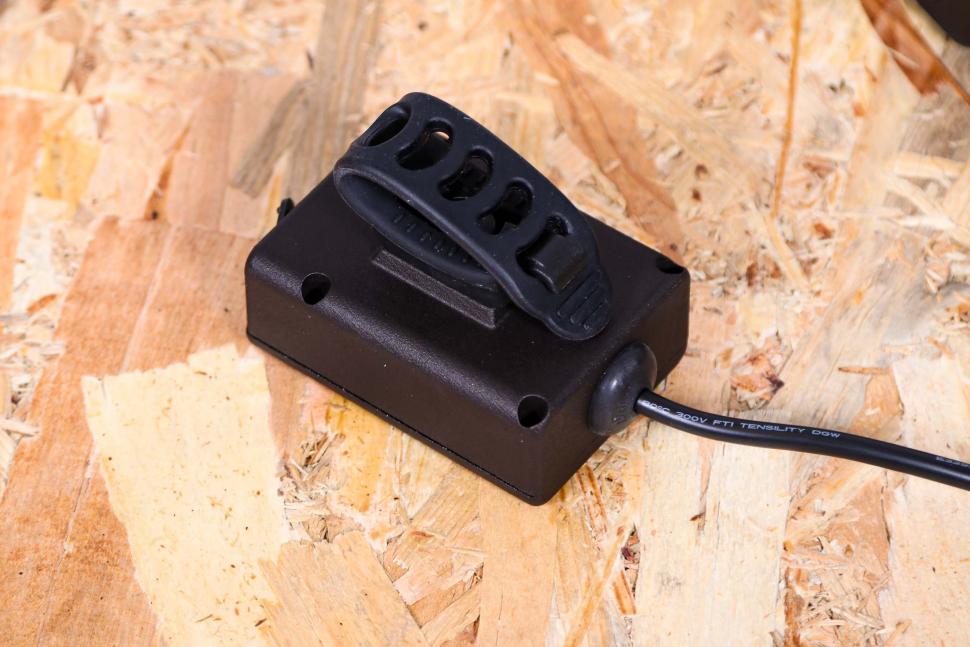
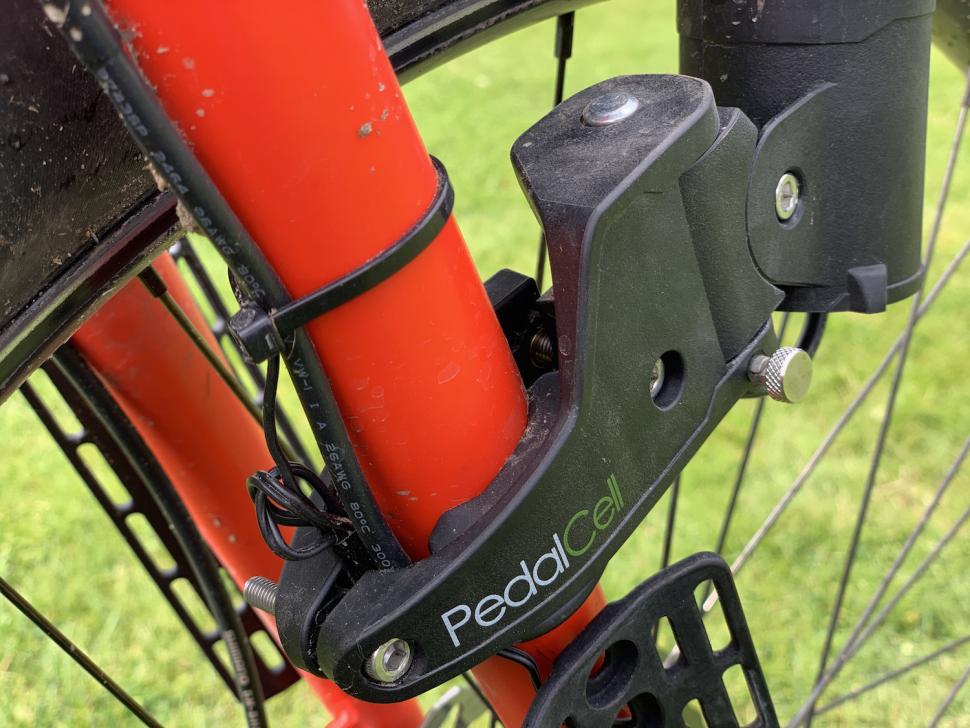

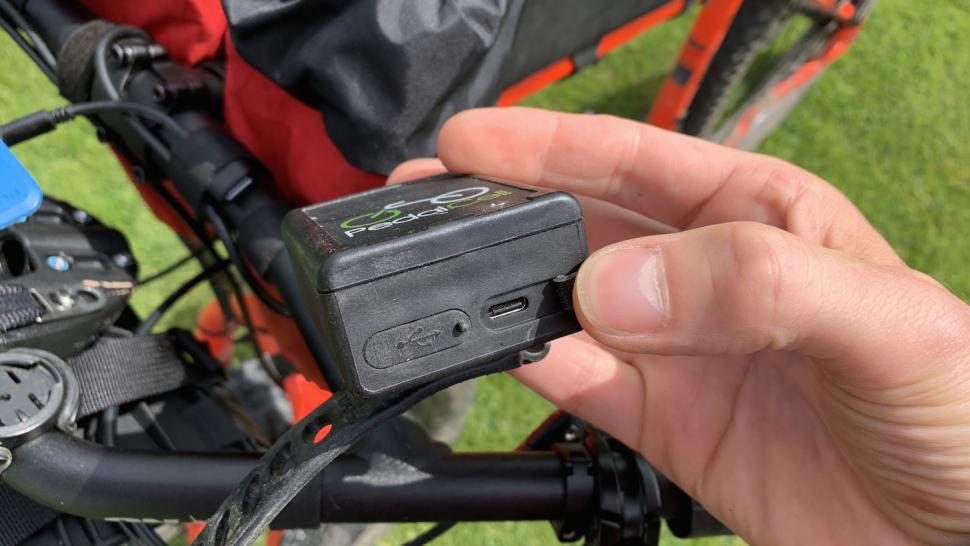

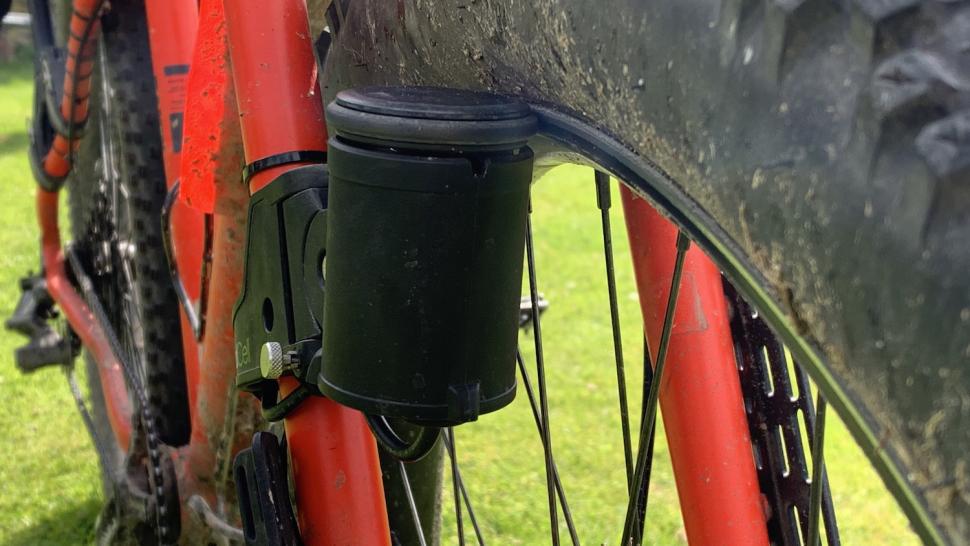
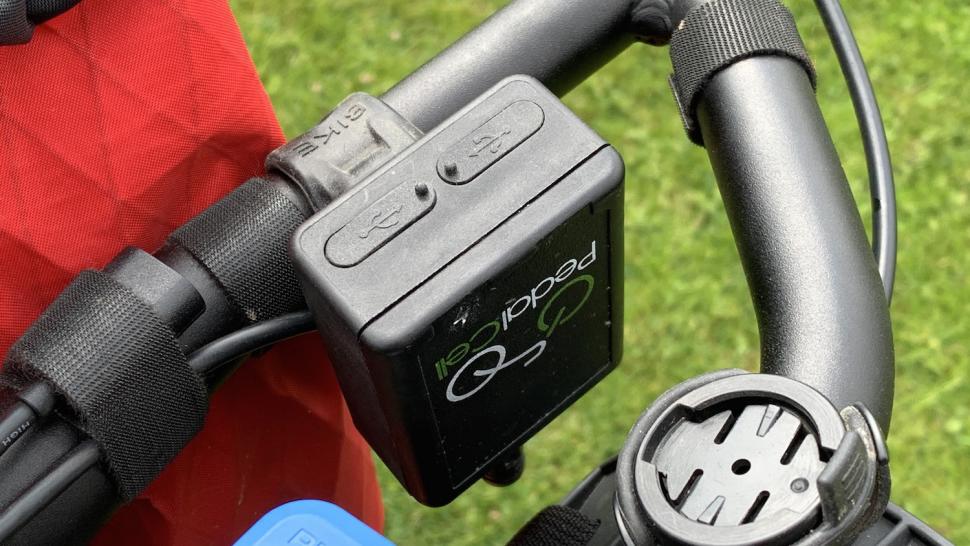
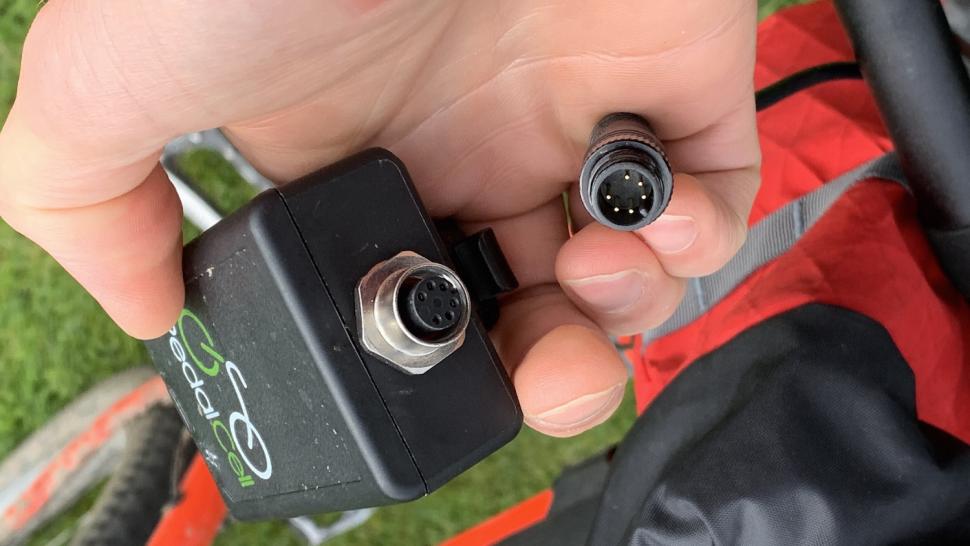
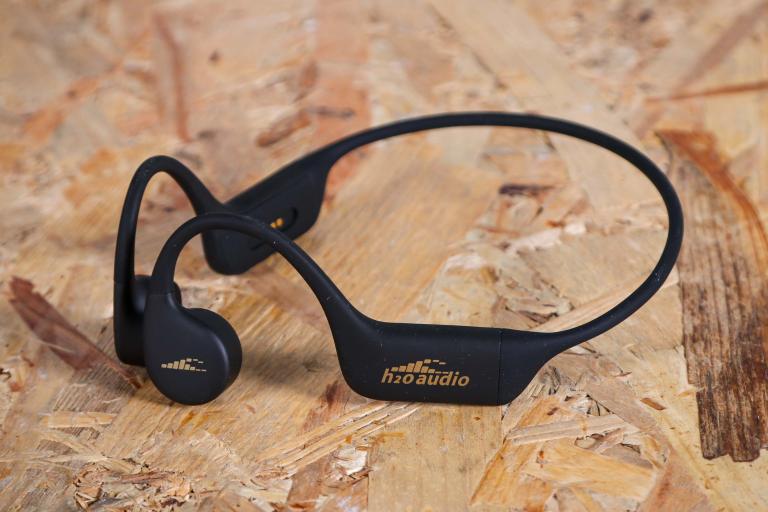
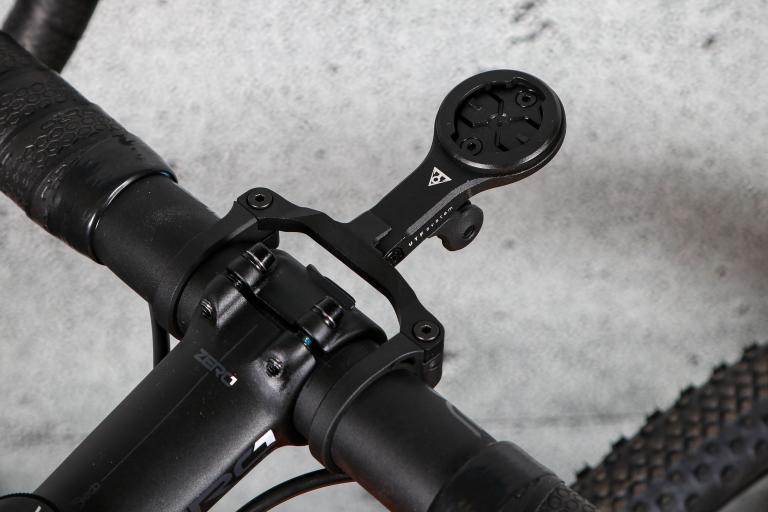
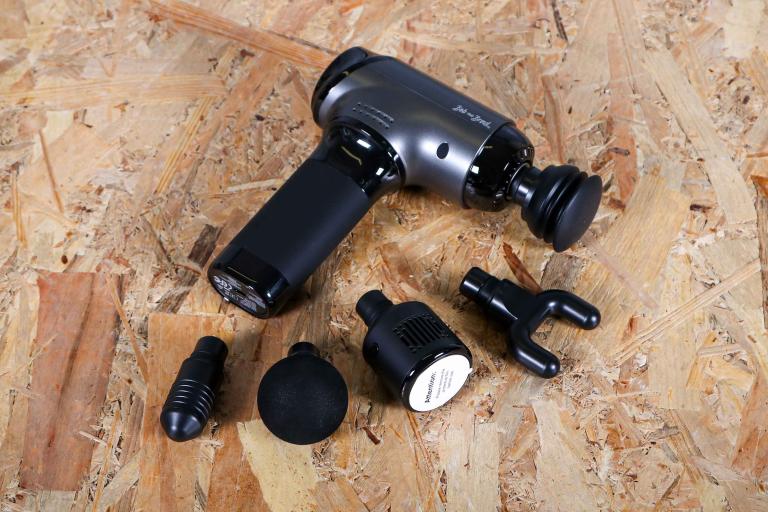

Add new comment
37 comments
Its certainly exciting tech. I'd love to know the barriers to integrating the underlying tech into a hub dynamo - I suspect they are probably more political (working with a hub dynamo manufacturer) than engineering based.
Most of the other clever charging solutions are ultimately limited by having to take a general purpose feed from the hub, whereas I suspect there might be advantages in designing a hub from the ground up that would use this tech.
I'm curious:
Would anyone be interested in a touring bike (or any bike, for that matter) will a fully integrated power generation/battery system? Are there any out there? The generator could be in the bottom bracket, or exposed if replacement/durability was an issue, with a seated battery set in the frame, with the wires running through the frame to front headlight/tail light/phone/aux. Has that been done?
No shame in that, we're very inclusive here
so only generating power while pedalling, and not getting the free power when riding downhill or braking?
Good point. Probably hub-based would be most efficient. But wouldn't it be most efficient to have it integrated into the bike? Battery in the frame, but essentially plug ins for different items. You could charge something even off of the bike just sitting there with a battery. Light indicator for battery charging level, etc.
Stick a dynohub on an e-bike? Perpetual motion!
In all seriousness, I'm not aware of any fully integrated solutions, although I'm pretty sure many people DIY a solution with a dynohub and a battery pack. You could probably make it quite neat by tucking everything away in a frame bag or similar.
While I appreciate fully integrated can look neater (and with large, heavy batteries is probably useful for weight distribution and handling), it also has downsides. Maintanance is a bit harder (some batteries on e-bikes seem to be completely non-replaceable which seems wasteful as batteries are known to have a limited life). You also have to rely on everyone wanting the same or similar solutions, where as a DIY solution lets you set it up exactly how you want. Finally, if you're just looking at lights and accessories (phones, GPS etc.) you probably don't need the hefty sort of batteries that e-bikes have, so the weight benefits of integration are lower.
I'm not sure exactly what you are getting at - its probably a bit too anal for most folks to worry out tbh.... BUT
If you want a bike with almost fully internal routed dynamo cabling - there is the Strael V3 reviewed about a week ago. I'm sure some of the more specialist touring makers like Thorn have been doing it for years but its not my area of knowledge.
All you have to worry about then is the battery. Quite few of the modern bikepacking charging rigs have at least a small battery in the steerer tube, but if you want bigger capacity you are looking at either a frame pack/bento box arrangement. You've also got the option of a third bottle cage mount. The complexity you get into is a custom shape of the battery vs the easy of getting a consumer grade powerbank from Amazon for relative peanuts.
IME dynamo hubs and USB converters kill battery packs and/or devices attached to them so you probably don't want to be replacing an expensive custom frame battery when you can replace a £1.49 'Finding Dory' 2000mAh USB battery the size of a lipstick you bought at Home Bargains instead.
You can buy an inexpensive battery pack that will do a few recharges, and then can itself be charged up at your b&b, so I'm not seeing any great advantage in this.
Guess that depends on the kind of touring you do. Bivvie's don't tend to have mains electricity.
True, but how many people do that to make the units viable ?
Guess that depends on the kind of touring you do. Bivvie's don't tend to have mains electricity
Walter the Softy would be in a B&B with an ebike
"Bivvie? In my day we built a shelter out of cowpats and were grateful for it!"
whats wrong with the bus stop or supermarket trolley shelter?
Looks clunky as hell, but nothing wrong in form following function and sounds like it works well. A quick release option might make sense given then there's usually no need to perpertually charge things, and a battery pack will last a couple of days' trips negating any need for any kind of dynamo. Clipping this on every few days and keeping it out of harm's way in a bag the rest of the time could be good for longer trips.
Does seem pricey though: You could easily do a decent hub, USB charger, AND light for this price.
Please show your working. A 'decent hub' is at least £150, then it needs building into a wheel (spokes at least, rim tape, time), then a 'decent' USB converter - as mentioned - is serious money. Like €110 at least for something capable of a 1A output. And no hub/USB setup comes close to the 2.4A on offer here.
I've done 5000+ mucky commuter km on a £30 shimano dynohub without issue, and ~3000 on a jtek/alpkit £80 one, which I'd both define as decent, but let's go with a more brand-name SP Dynamo PD-8 at £95, Sinewave Revolution charger for £120, and a Busch & Muller IQ range light for ~£50.
These are options _I know_ do the job. Cheaper options are obviously available and review well, but I have no personal experience.
I'll give you that spokes and rim tape would take you over your £280 total if you can't use existing or have them to hand. My time doesn't cost when we're talking tinkering with bikes!
Totally valid point re. 2.4A too. But again, I know that 1A does the job.
Anyway, I can fully see the benefits the PedalCell if you're wanting to make use of an existing wheel: just less so if you're starting from scratch. It seems an impressive bit of kit.
While it has the advantage on output, I'd disagree a 'decent hub' is at least £150. A middle of the pack Shimano hub dyno can be had for £30-50+ which is relatively heavy but generally reliable and the output is as good as any other really +/- a few percent. An SP hub is about £70 up if you want lighter.
The B+M USB-Werk I've used in the past, pre-Brexit, used to cost about £50. Sadly, now nearer £75 though I've killed two of those in the last decade so went for something else. The internal cache battery dies in them unrecoverably if left uncharged for months. That outputs 1A pretty reliably at touring speeds. I've just bought a Velocharger - £70 which I've had 1.5A out of from an SP PV-8.
Back pre-Brexit, a complete wheelset with a Shimano 3n80 front (XT)/ XT rear and Rose's in-house rims (rebadged Exal IIRC) cost me less than the cost of the 3n80 in the UK. ie. less than £100. I cycled across France and Spain with those with zero issues.
An SP PV-8 hub built into a decent rim from Spa Cycles is about £150 though I've just picked up a brand new PV-8/Exal LX17 wheel built by Spa from eBay for considerably less. If only I could tour somewhere.
If only I could tour somewhere. 
It does seem that the USB charger element is the key to doing this well/reliably. You're not the first I've heard of to have had issues with the B+M one. That 2x £50 and now another £70 all adds up eh? I was rather put off by the Velocharger one's lack of information on their site. Good luck!
I thought I was just unlucky with the first one. It had lasted about 5 years. The 2nd had very little use but totally dead when I tried it last month AFTER buying a 700c wheel for the road bike (tourer is 26"). It had worked 18 months previously when I last used it.
We'll see with the Velocharger. Seems to charge from about 11kmh and cuts off over about 45kmh. It switches back on by itself though I've wired in a handlebar remote switch. It uses waterproof connectors like the B+M but slightly larger and more readily available as they're same used for common LED lighting and fish tanks. Regular speeds get 1A+ which is plenty to keep a phone charged each day. Seems robust enough though I'll still stick it somewhere waterproof rather than as they show it, attached to a downtube with the USB-A socket downwards. IME of touring, water, sand, mud goes in every direction and USB-A sockets corrode easily. Reliability tends to become apparent in the middle of nowhere in a rain storm when your phone has 1% left...
In the late 80s I upgraded from a bottle dynamo to a Sanyo Dynapower after riding my sister's bike with one on and barely noticing the drag. You can still find them on eBay for a few tens of pounds. They fit between the chain stays by the BB and are driven from the tread of the tyre. A lever lets you choose if it's engaged or not.
That could do 6v at 3w, probably AC as incandescent bulbs back then didn't care. 15-20 watts here is amazing for what looks like a reversion to the bottle form factor (albeit more sensibly using the rim), but I can't see how you can do that without more drag - which in a generator is dominated by the electrical energy you're producing unless the design is poor.
Like Secret_squirrel, my hunch has always been that hubs are more efficient than wheel-driven dynamos. Both here and in the link shared by Kiwi Mike, speed is mentioned but not drag or power. So we can't know if you need to be Mr & Mrs Kenny on a tandem to get this one to 20 km/h, or if Mike Stead is a power beast. At my puny power, 20w is a lot, even if we can assume 100% efficiency.
Could you ride it on zwift or with a power meter?
On the strength of this review I was one click from buying this. Then I actually looked at what my battery situation is. I have 46,000mAh of power between two batteries. The chances of me avoiding restaurants/cafes/hotel rooms before both of these batteries are dead seems slim. Great technology though.
Roll on NC500 in August!
How heavy are those 46,000mAh though, in comparion to the battery packs?
The NC500 is ... hillly. Well hilly. Just saying
Great ride though, enjoy your trip!
Its an interested product, but not *that* much better than the popular hub based Forumlader V5 dynamo solution. With the dynamo solution being probably about 100g lighter (WAG) and a lot neater.
Since you dont get anything for free in physics I'd like to see the drag compared between the 2 systems. My hunch is that the hub dynamo's are more effecient. They certainly wont eat your rims like this might.
Its also worth noting that Hunt will supply a Son Delux based *full* wheelset for £220 over a standard hub (based on the adventuresport 650b). Leaving you ~£60 for lights or a very good powerbank. I had an Axa Luxx 70 with a built in usb charger for about £70. (pre-brexit)
So a good contender if you want to go full USB powered but not a slam dunk IMO unless you are just interested in peak power.
Any chance of a fitted picture?
https://www.cyclingabout.com/lab-test-charge-battery-or-smartphone-with-...
You're getting about twice the power at a given speed. And it's 110 euros for the base V5, plus the other bits and peices you need. For most peoople, the Pedalcell represents much faster, simpler fitting and use.
As I note in the article, there's no right or wrong wat to do on-bike power - just what works for your use case.
This does appear to be quite a bit more efficient than a hub, even factoring in mechnical losses. I guess for a number of reasons, possibly the higher RPM of the generator rotor is more efficient, the use of 3-phase windings, better electronics going straight to 5V out rather than regulating 6/12V down.
How has this been assessed?
I'm surprised that a rim based dynamo can be considered to be more efficient that hub based, when hub dynamos have replaced rim based dynamos generally in the industry.
Is this drag of the dynamo compared to drag of a dynamo hub for the same eelctricl output? what about th drag of a normal hub?
Is there a trade off in reliability? what if the rim is wet or muddy or slightly buckled?
The various folks doing complicated tests on rigs have measured the drag, and that's what cyclingabout.com found - the drag per watt generated was best for the Pedalcell.
Wet, muddy or buckled rim (within reason) doesn't matter - the spring and rubber ring combine to stay stuck to the rim. The large diameter must help here - a smaller head - like on the old 'milkbottle' dynos - would have a much harder time.
Only relevant when you are already in the market for new wheels, this system can be supplied without replacing a wheelset.
Can't believe you didn't put pics of this on a bike to show us what it looks like!
Pages